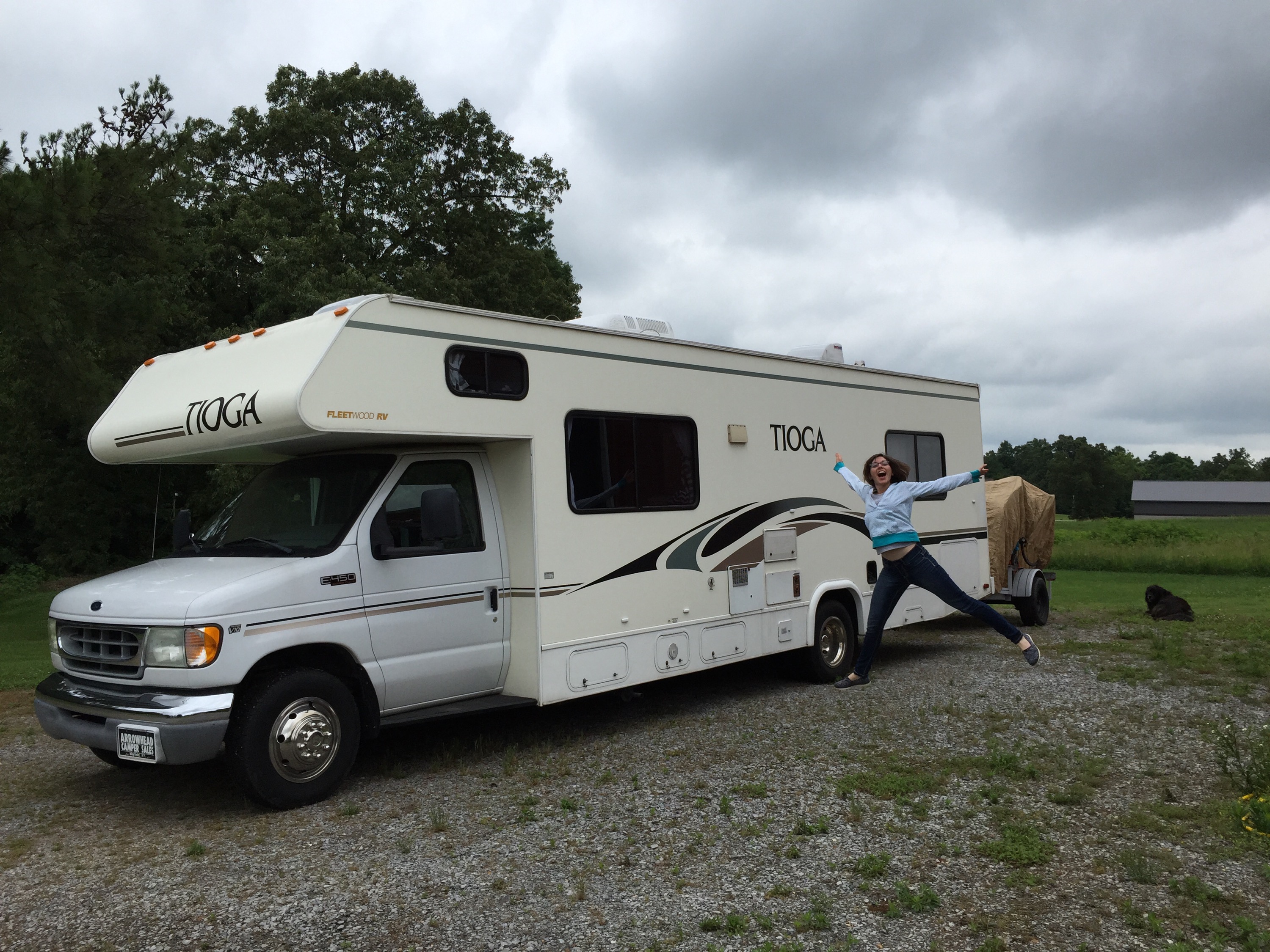 When we first bought our motorhome and told friends and family our plans to move into it full-time we inevitably received this response:
When we first bought our motorhome and told friends and family our plans to move into it full-time we inevitably received this response:
Is that enough room? How will you fit everything in there? Won’t you get tired of each other?
This was not a spurious decision on our part, we had carefully considered this before our purchase and came to the conclusion that smaller would be better for us, for a variety of reasons.
We didn’t use most of our space anyway
After living in a variety of apartments over the years, gradually working our way up from a small one-bedroom to a roomy two-bed/two-bath with attached garage, we have noticed that we just don’t use that much space. Oh, we are able to fill as much space as we have available, but actually spending time in and utilizing space? Not so much and in predictable patterns.
No matter what grand ideas that we had for a spare room: office, art studio, guest bedroom, or neatly organized workshop/garage – it just became a storage space for unused items. We gravitate toward each other, so if one of us is in the living room doing something, the other can generally be found there as well.

Ultimately, we realized that we spend the majority of our time in the kitchen, dining area, living room (couch/laptop/TV), asleep in the bed, and of course the bathroom.
After living in a variety of apartments with differing floor plans, we also noticed that we prefer openness. We want the ability to interact from the kitchen to the dining area to the living area. The bedroom can be separate, as we primarily use it to sleep and store clothes.
An RV meets all of these requirements
It has a full kitchen, dining booth, and a couch-sized window seat in the main living area. There is a bedroom in the back, with a full-sized bed (which is what we’ve always had, no adjustment for us) and in-between there is a full bathroom.

The bathroom can be closed off from either or both the bathroom or living area, providing private spaces as desired.
Above the cab is additional storage and a pull-out twin bed. We keep our books on the shelves up there. There are privacy curtains available, so if we so desired, one of us can go and barricade ourselves in “the Library” for a bit of privacy.
All of the spaces that we actually use are available and open to each other – though they can be partitioned off so that we can have various spaces as we desire.
But what about when you get tired of each other?
Since we tend to gravitate toward each other anyway, we don’t seem to get tired of each other’s company. If we happen to, we will just plan a day separate from each other, or one of us will stay inside and the other will go out.

What did you do with all of your stuff?
We did put some things in storage. Most of my tools, a select few pieces of furniture, and some mementos. Fortunately, family kindly offered space so that we didn’t have to find a storage unit.
Between Goodwill, two yard-sales, family, and friends we dispensed with the rest of our possessions. (A process which Ashley had no trouble with while I struggled mightily. Though I appreciate and flirt with minimalism: I am still a natural saver and hoarder.)
In short, everything we own is being carried with us, or could be condensed down to a single storage shed.
So far we haven’t missed anything that we got rid of, and more than half of the things that we did bring along haven’t yet been touched.
How will we make do in such a small space?
Splendidly! We are minimizing material possessions in order to maximize our experiences and the relationships in our lives.

